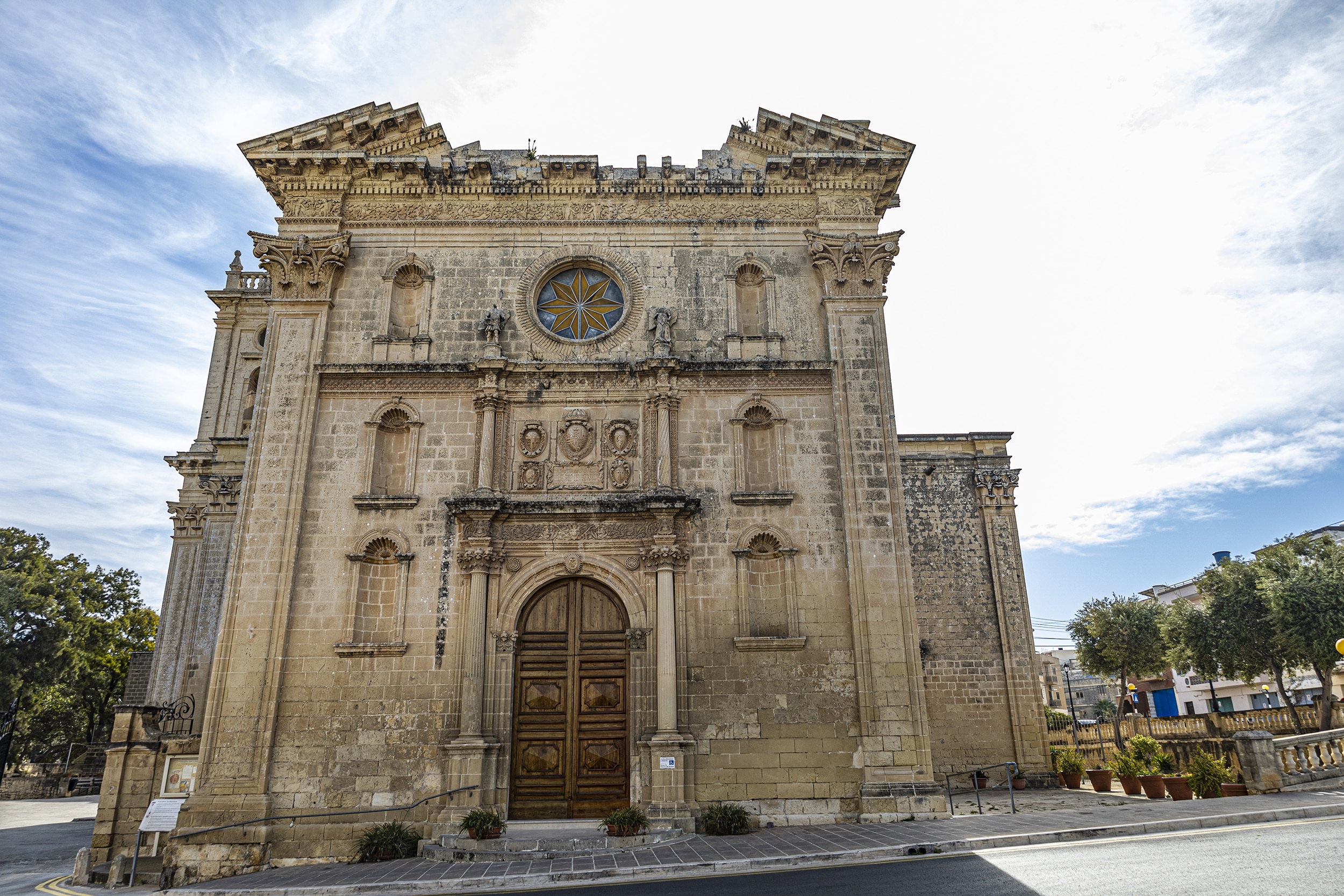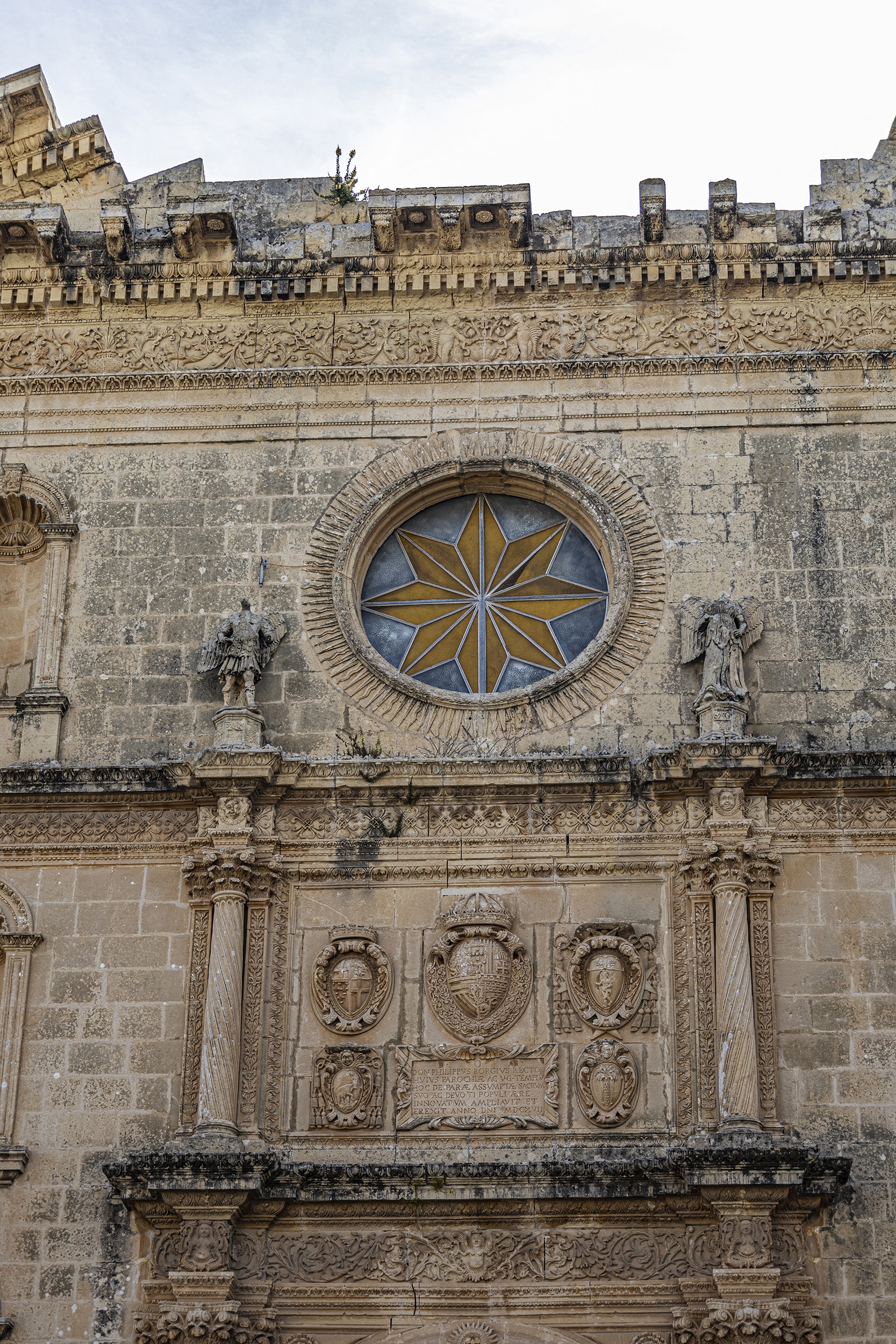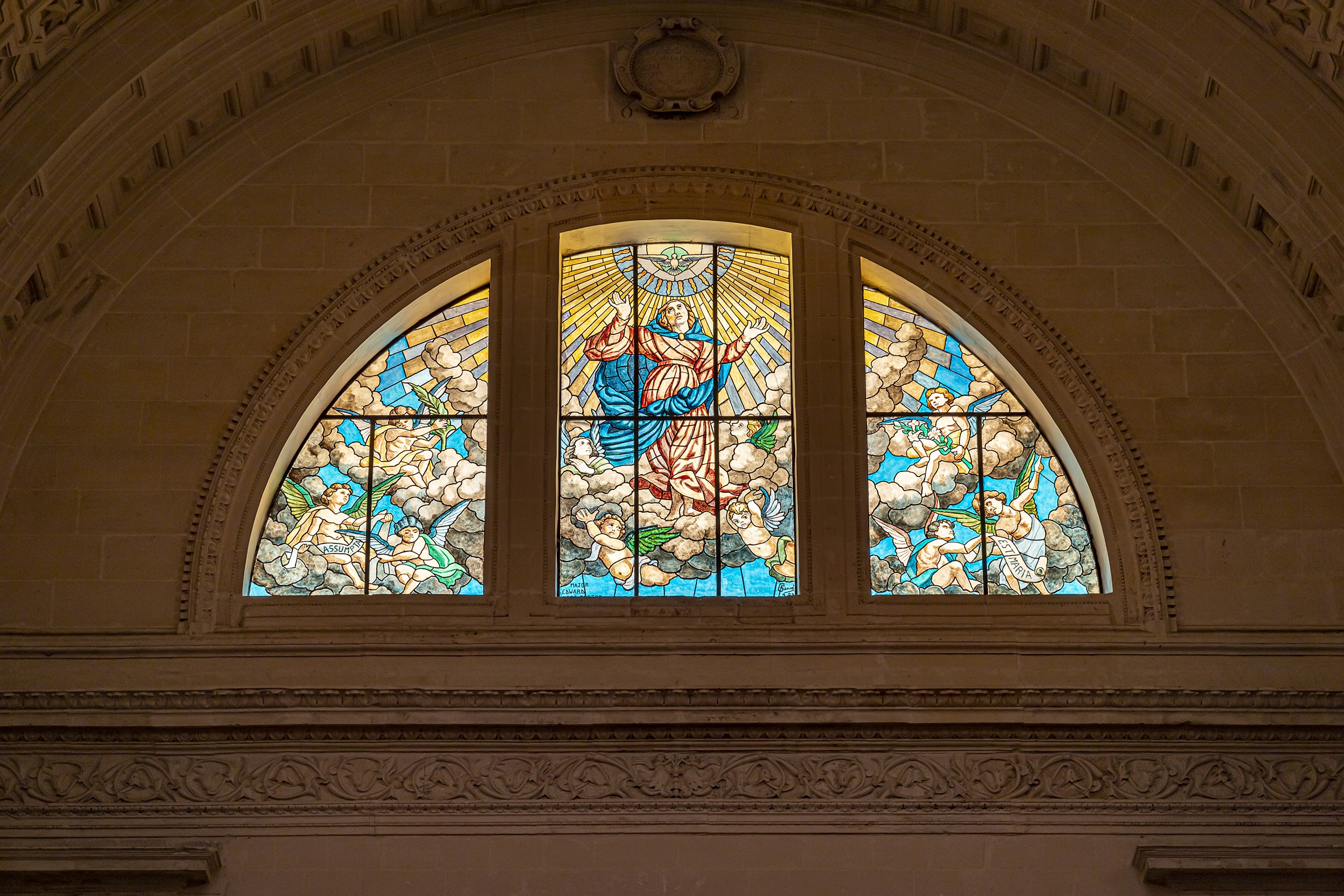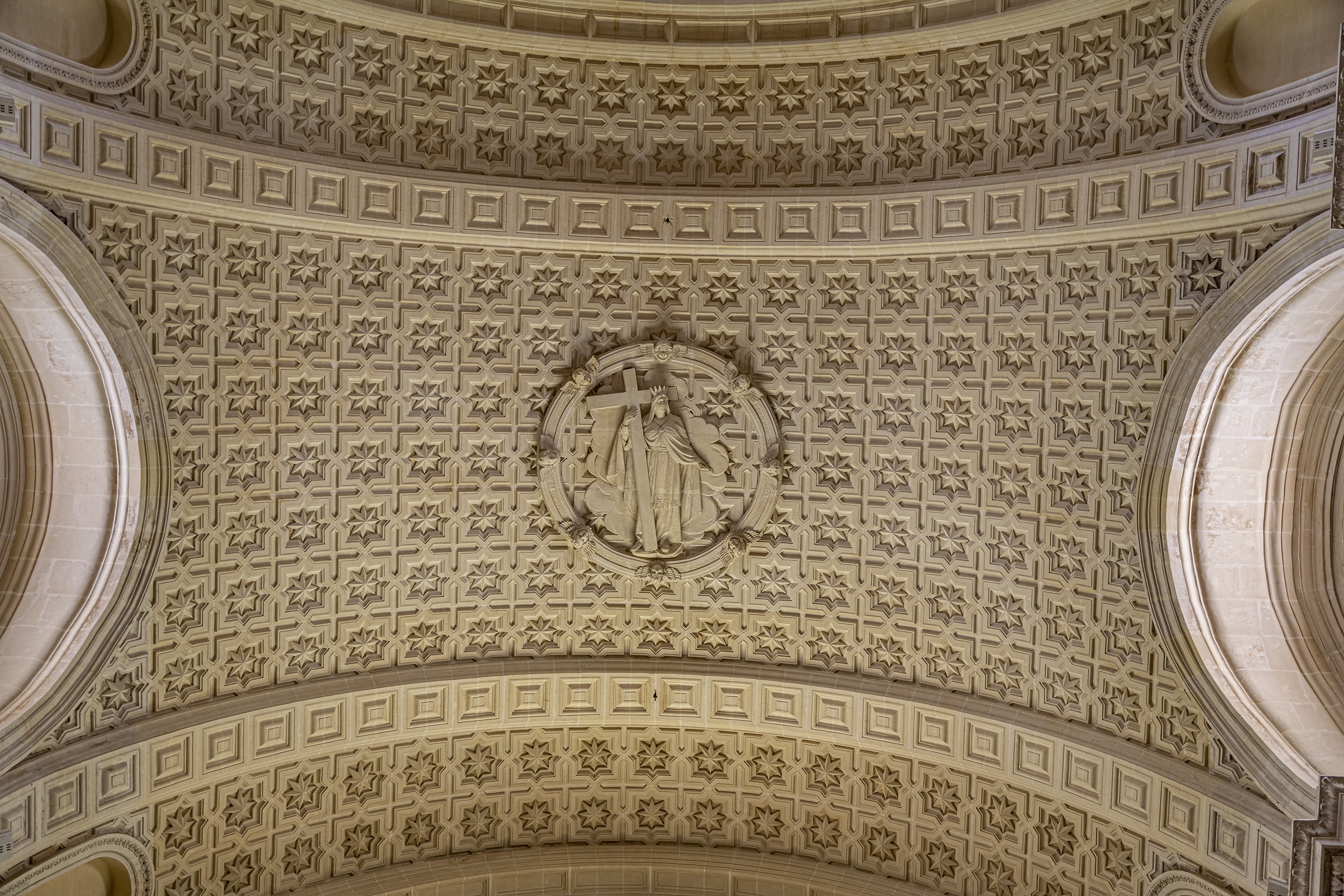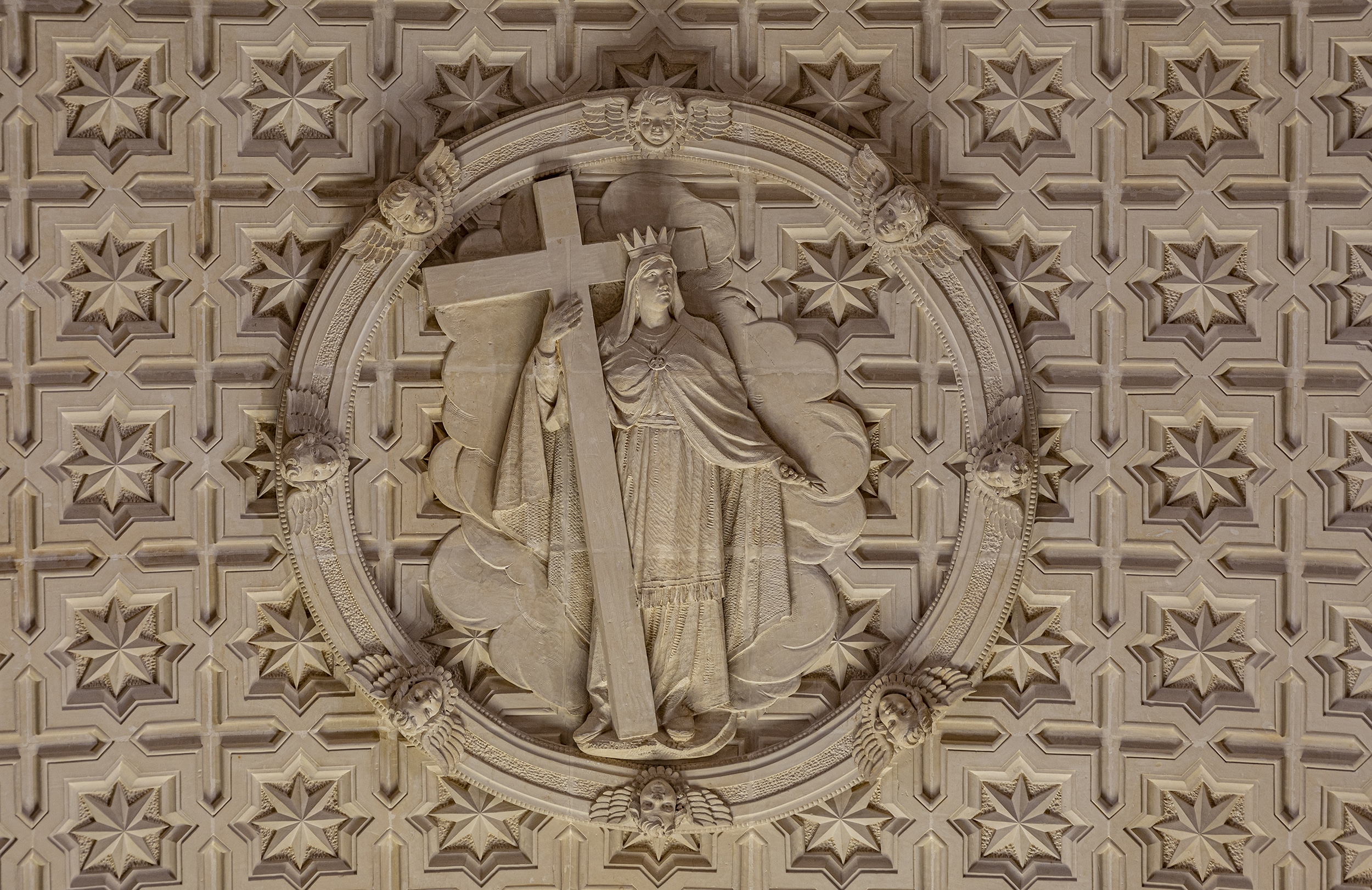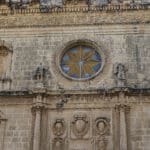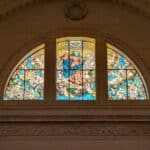Parish Church of the Assumption
The Parish church of Santa Marija in Birkirkara was built between 1610 and 1656. Above the main doorway, the date 1617 is inscribed. This church replaced an earlier one which was built in medieval times, around 1436. The old church with its cemetery, as well as the two small chapels of St Agatha and St Sebastian found within the burial grounds were demolished, to make way for the new church.
Historic Detail
The church is considered a masterpiece of seventeenth Century Maltese workmanship. It is also one of the finest architectural works in the late Renaissance style in Malta. The design of the church is attributed to the Maltese architect Vittorio Cassar (c.1550-1607) with later works attributed to another Maltese architect Tommaso Dingli (1591-1666). Although the architect of this church is uncertain, Don Filippo Borg, a Parish priest of this church, testified that Tommaso Dingli was the architect, and the one who designed the church.
The facade of the church is designed with symmetry, framed by giant Corinthian pilasters and inset panelling. The first section frames the circular-headed doorway, which is flanked by two slender columns on plinths and surmounted by a small oval window. The second section, above the main door’s ornate entablature, encloses a double row of five carved escutcheons. The coat-of-arms are of those of King Philip III of Spain, Grand Master Alof de Wignacourt, Bishop Baldassare Cagliares, Don Filippo Borg and Don Andrea Galea. They are carved in stone and are the most decorative feature on the façade. A plaque at the centre, dated 1617 records the efforts and financial support of Parish priest, Don Filippo Borg and the parishioners to build this church. The refined and exquisite sculpture that embellishes this church defined the artistic quality of the facade.
In 1656, the dome was completed. It is relatively low in height and rises on a high octagonal drum in eight sections with large windows. Today only the drum was still to be seen. In 1679 a belltower was raised, next to the north transept. The main window of the belfry however is unusual in design and may date to the eighteenth century.
The church is planned on the shape of the Latin cross. The nave has no aisles, while its side-altars are set against the church’s walls. The plan has simple geometric proportions and is inspired by the Renaissance concept of a harmonious configuration of space. Highlight:
The interior of the church is one of the richest in the Renaissance style in Malta, with its exquisite detail of delicately carved ornamentation, especially the twinned superimposed columns that give a jewel-like effect. The church had eleven altars, including the two altars in each transept and five others within the nave. These altars are adorned by beautifully baroque frontispieces, most of which were carved during the 18th Century. Throughout the years the artistic objects originally found at the old Parish church of Santa Marija were taken elsewhere, mostly to the new Parish church of St Helen.
Titular Painting:
Although the church no longer has a titular work of art representing the Assumption of the Virgin Mary, a stained-glass window in the choir represents Her Coronation. The theme of the Coronation of the Virgin usually accompanies titular paintings of the Assumption, completing the sacred moment of her arrival in Heaven. The composition is framed in stone, dividing the window in three parts.
Our Lady is portrayed as she is lifted to heaven in a swirl of clouds, surrounded by angels. Above her head is the Holy Spirit, emanating rays of light from heaven. The heavenly scene is complemented by the natural light pouring in through the window.
Project Information:
The European Union co-funded project, allowed for the conducting of studies required to identify the causes of the structural deficiencies in the building. These studies will guide the necessary interventions required to strengthen the foundations of the building, to save this historic church that lies within the heart of the community.
Visitors Opening Hours:
Refer to parrocci.knisja.mt/parrocca for full details.
How to arrive:
Refer to Malta Public Transport website: www.publictransport.mt
